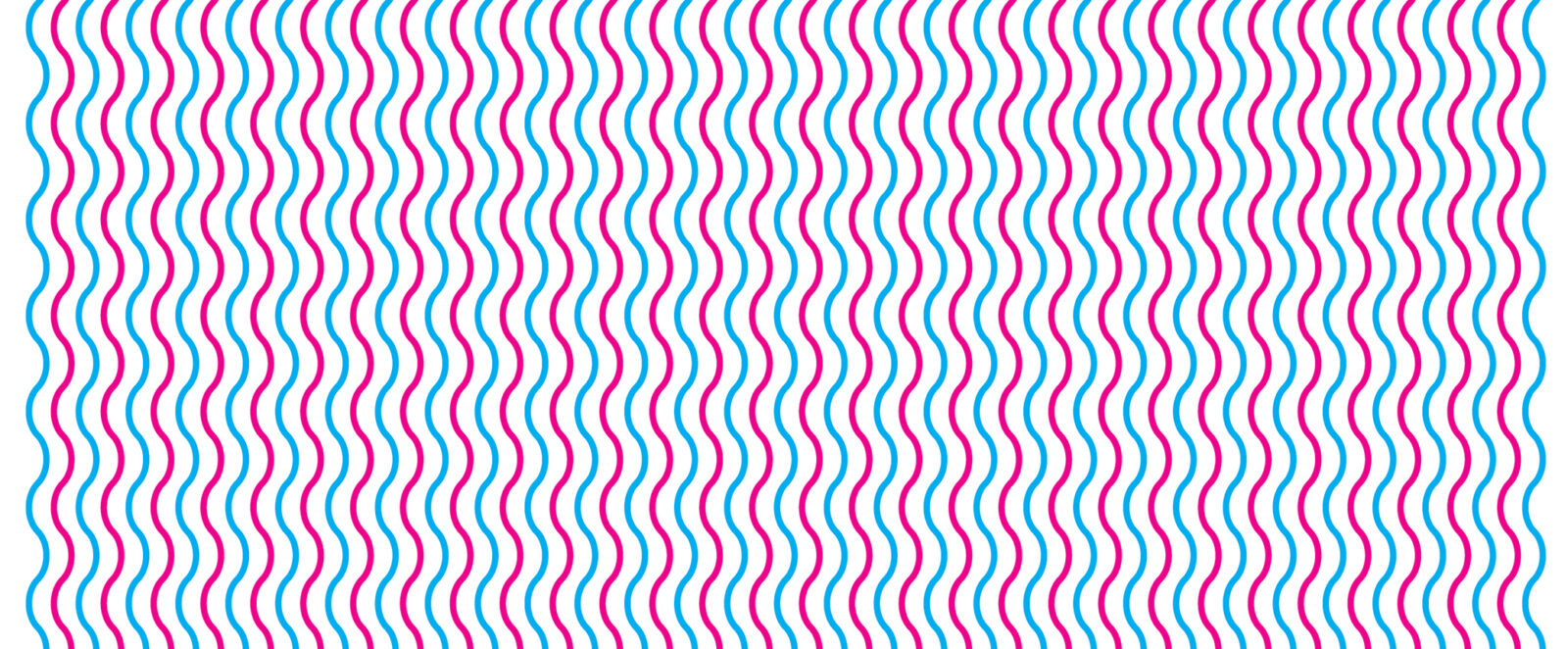


Drenched in magenta light and saturated with the fragrance of Nag Champa incense, a studio apartment above an Italian restaurant in New York City’s Tribeca neighborhood throbs with a loud and dense electronic drone pouring from monolithic speakers in each corner of the room. The sensory amalgam is intense, particularly the flow of sound, which vibrates the viscera and prickles the eardrums through an array of pure tones that span the audible spectrum. The sound is static, temporally unchanging, though a turn of the head or a walk across the white-carpeted floor reveals different elements in the sonic field. This is La Monte Young and Marian Zazeela’s Dream House, an installation first mounted in Munich in 1969 and running more or less continuously since 1993 in its current location above the couple’s Church Street apartment.
Fifty-three blocks north, in the hubbub of Midtown Manhattan, another seminal sound installation broadcasts its steady drone, a harmonic cluster of tones unexpectedly emerging from an unmarked subway vent on a pedestrian island crossed each day by thousands of shoppers, theatergoers, workers, and businesspeople. The piece affects a slight shift in the sensory landscape, defining a sonic space that’s perceptible but, for many who pass through it, sensed only at the edge of awareness. Installed by the artist in 1977 and dismantled in 1992, Max Neuhaus’s Times Square was relaunched in 2002 and since then has sounded twenty four hours a day, seven days a week as one of New York City’s great works of public art.
What accounts for this fascination with the drone among the pioneers and current practitioners of sound art? The answer to this question plunges us into technological, philosophical, and spiritual concerns and projects us back into sound art’s prehistory. With the invention of the phonograph in 1877, Thomas Edison unwittingly disclosed a new field of sound and a new way of thinking about it. Edison saw the device primarily as a means to register human speech and music, yet the phonograph makes no distinctions among audible phenomena.1 With equal facility it captures vocal utterance, musical pitches, the whoosh of the wind, the rattle of traffic, and the hum of the device itself. The whole world of sound became available for aesthetic apprehension and appreciation, though it took some time for this capacity to be fully grasped. The Futurist painter Luigi Russolo affirmed this sonic shift in his 1913 manifesto _The Art of Noises_, which expressed his desire to orchestrate “the eddying of water, of air or gas in metal pipes, the muttering of motors [. . .], the throbbing of valves, the bustle of pistons, the shrieks of mechanical saws,” and other sounds of urban life.2 The widespread availability of portable recording devices by the mid-1940s enabled radio engineer Pierre Schaeffer to realize Russolo’s vision through a set of “noise studies” that montaged audio recordings of everyday sounds—notably, locomotives at a Paris train station.
The philosophical resonance of noise was more fully grasped by John Cage, whose infamous 1952 composition 4’33″ asks the performer to make no intentional sound. As such, the piece shifts aesthetic attention from the foreground to the background, from music to what Cage called in his Future of Music: Credo, “the entire field of sound.”3 Reflecting on this piece, Cage remarked: “I have felt and hoped to have led other people to feel that the sounds of their environment constitute a music which is more interesting than the music which they would hear if they went into a concert hall.”4
Cage thus attuned his listeners to a domain of sound that precedes and exceeds music and, indeed, all human contributions: the sonic flux of the world, the broadband totality of sound that has filled the world since time immemorial. Inspired by Russolo, Cage, and the growing ecology movement of the 1960s, Canadian composer R. Murray Schafer proposed in the early 1970s in his _The Music of the Environment _to treat the world as a “vast musical composition which is unfolding around us ceaselessly.”5 Schafer termed this “the world soundscape,” describing it as a macrocosmic flow of sound composed of more limited soundscapes, or acoustic environments.
Cage and Young drew deeply from Asian spiritual traditions: the former from Zen Buddhism, the latter from Hinduism and Sufism. Young has often pointed to the ancient Indian Vedic distinction between ahata nada (“struck sound”) and anahata nada (“unstruck sound”), between what we call music and the cosmic harmony of the universe.6
Like the nada-yogi who employs music as a vehicle for transcendence, Young conceives of his drones—collections of pitches calculated with precise mathematical rigor—as pointing the listener toward the abstract numerical structure of the cosmos. Cage, too, hoped to reveal the transcendental condition of all music, but for him this source was more mundane and material: background noise, the constant flow of worldly sound from which all music and speech emerges and into which they inevitably recede. Either way, the sensuous manifestation of this transcendental sonic domain can only be a drone: a bewilderingly complex concatenation of pitches or noises.
The affective, conceptual, and spiritual power of the drone has proven to be a constant inspiration for experimental composers and sound artists since the 1950s and 1960s. It is evident in the sublime electronic compositions of Éliane Radigue, Alvin Lucier’s seminal installations Music on a Long Thin Wire and I Am Sitting in a Room, the rainforest soundscapes of Francisco López and Steven Feld, Toshiya Tsunoda’s vibration studies, the dark metal of SUNN O))), the aquatic field recordings of Annea Lockwood and Jana Winderen, the urban hum revealed in Christina Kubisch’s Electrical Walks, and so much more. Disparate though they may be, all these projects attune us to something beyond themselves, employing the drone as a microcosm of, and vehicle for transport toward, the macrocosmic sound of the universe.
1. See Thomas Edison, “The Perfected Phonograph,” North American Review 146 (June 1888), 641-50.
2. Luigi Russolo, “The Art of Noises: Futurist Manifesto,” in The Art of Noises, trans. Barclay Brown (New York: Pendragon, 1986), 26. Reprinted in Audio Culture: Readings in Modern Music, ed. Christoph Cox and Daniel Warner (New York: Bloomsbury, 2004).
3. John Cage, “Future of Music: Credo,” in Silence: Lectures and Writings (Hanover, NH: University Press of New England/Wesleyan University Press, 1961), 4-5. Reprinted in Cox and Warner, Audio Culture.
4. Conversing with Cage, 2nd Edition, ed. Richard Kostelanetz (New York: Routledge, 2003), 65.
5. R. Murray Schafer, The Music of the Environment, in Cox and Warner, Audio Culture, 29-30. This 1973 pamphlet was expanded to become the 1977 book The Tuning of the World, reprinted as The Soundscape: Our Sonic Environment and the Tuning of the World (Rochester, VT: Destiny Books, 1994).
6. See Gabrielle Zuckerman, “An Interview with La Monte Young and Marian Zazeela,” American Public Media, July 2002, and “La Monte Young and Marian Zazeela at the Dream House: In Conversation with Frank J. Oteri,” New Music Box (October 1, 2003).

Christoph Cox is a critic, theorist, and curator of visual and sonic art, with exhibitions presented across the United States. He has taught at Hampshire College and Bard College. He is an editor and author of several volumes, including Sonic Flux: Sound, Art, and Metaphysics (2018), and his writing has appeared in several journals, magazines, and exhibition catalogues.
Get the latest news and stories from the Rubin, plus occasional information on how to support our work.